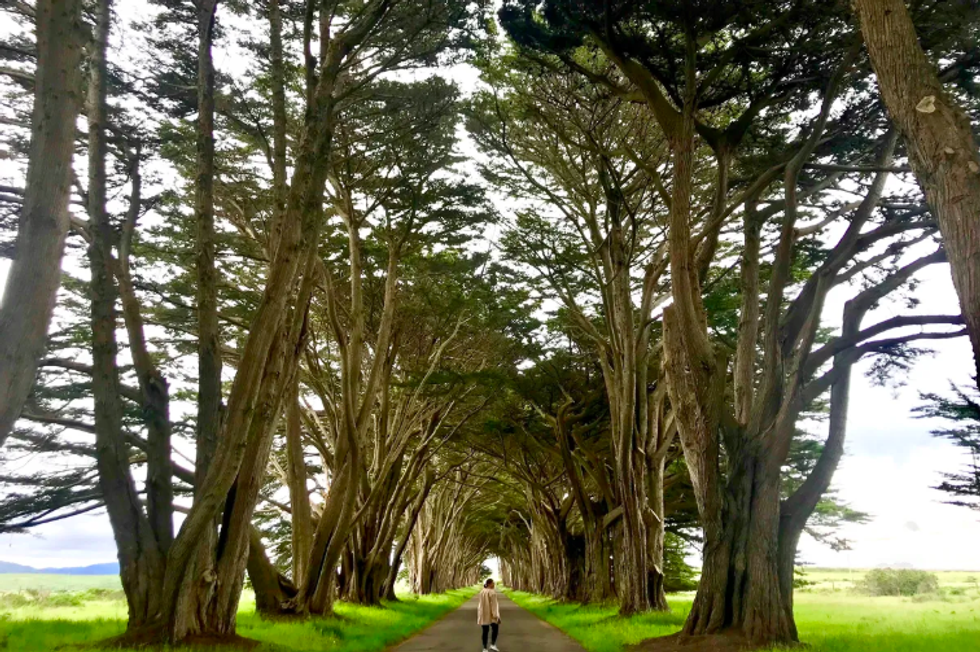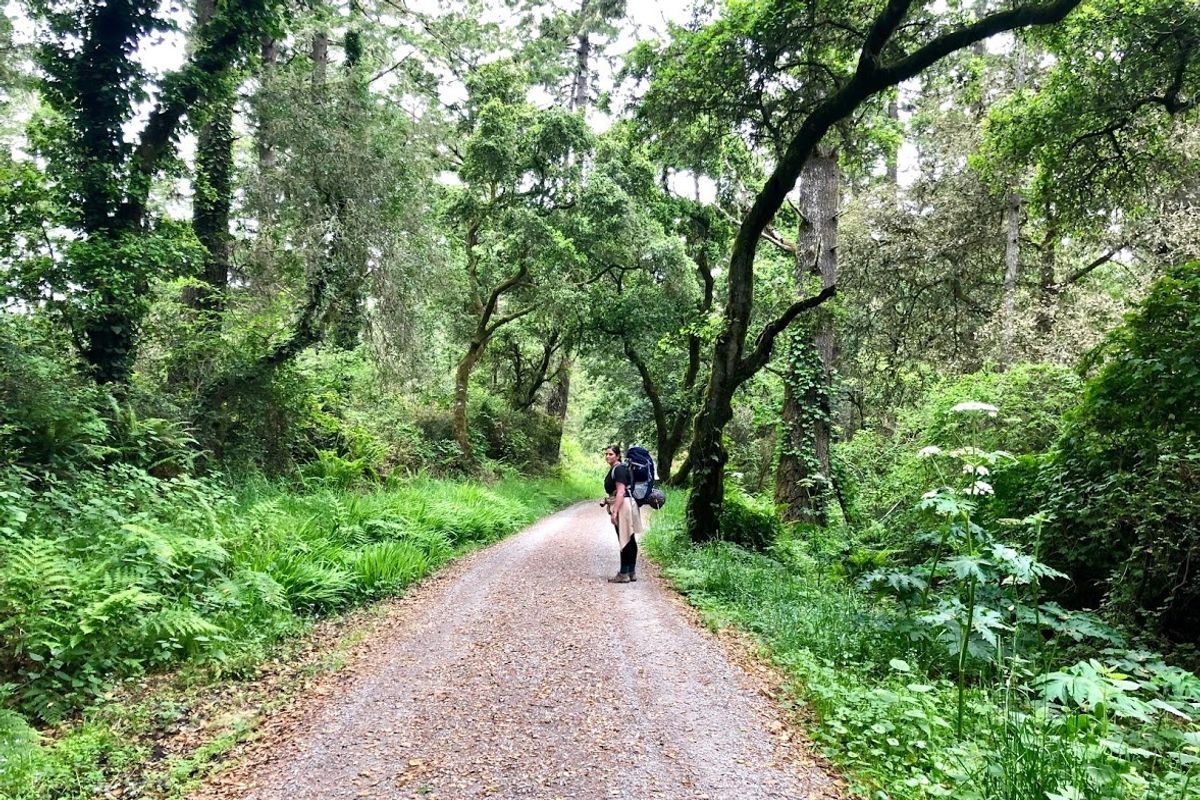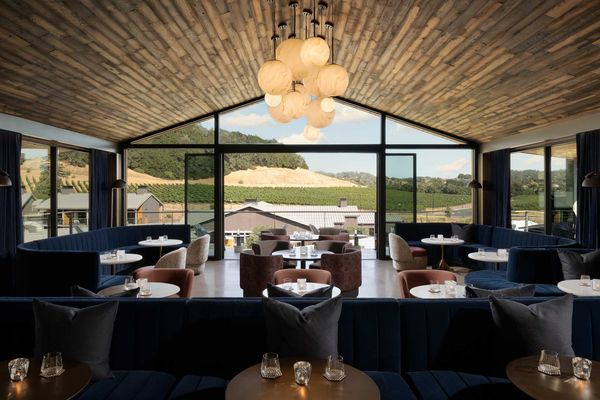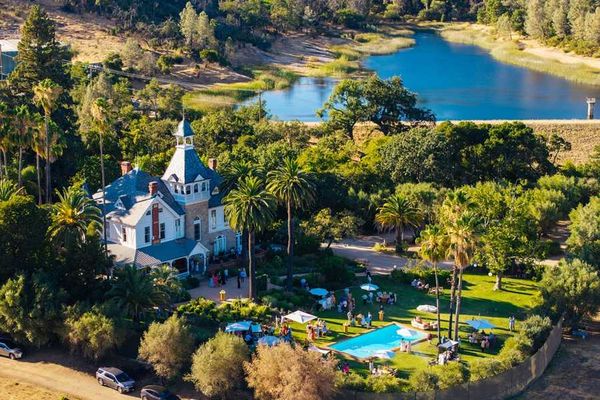Fancy hiking off into the wilderness, just you and your pack (ok, and maybe your dog and/or bae), into a secluded wilderness that's well off the beaten path?
Backpacking isn't for the faint of heart—it takes a bit of careful planning and, yes, you have to carry all your stuff. But the rewards are well worth it: no cars, no RVs, no crowds. Take baby steps toward becoming an intrepid backpacker by first setting off on short hikes into campsites that will check all your boxes for privacy, lush foliage, and killer views. We suggest starting with a short trek into Sky Campground, at Point Reyes National Seashore.
Most Bay Areans have been to Point Reyes National Seashore, but only the backpackers will have found the small, secluded, and serene pockets of nature that are carved out specifically for hiking in to one of its four campgrounds: Wildcat, Glen, Coast, and Sky. The latter is the most accessible to beginner backpackers, requiring a steady, 1.4-mile uphill climb to the campsite, which sits on the western side of Mount Wittenberg.
The hike to the campsite is uphill but also moderate; this will get you accustomed to carrying the weight of a small child on your back without overdoing it. Don't rush—after a while you'll forget the weight of your pack and, when you arrive to your campsite, you'll be rewarded with panoramic views of the Pacific Ocean, Drakes Bay, and Point Reyes from the tents, which are scattered along the hillside and tucked among the trees or out in the open for ocean views.
A trip to Sky Campground will build your stamina for future endeavors, and teach you how to best pack your backpack for maximum comfort.
What to Know about Sky Campground, Point Reyes

Ocean view and shaded tent sites are available.
(Courtesy of Emma Webster)
At Point Reyes National Seashore, Sky Campground has 11 sites with one designated for groups. All sites are equipped with food storage lockers and picnic tables, but note that charcoal grills have recently been removed and are now prohibited. There are shared bathrooms and potable water onsite. Cost is $20 for the first six people. Campfires are also not allowed in the campground; to have a beach bonfire, get a fire permit at the Bear Valley Visitor Center.
Be sure to check the campground map before booking if you have a preference of view. Campsites 1, 2, 10, and 11 will provide the best ocean views; secluded sites among the trees offer more privacy.
When to Visit
Sites at Sky Campground are open year-round and can be booked up to three months in advance; limited same-day sites are also released daily. The best time to visit is March through May for moderate temperatures and clear skies. Reserve your site early at recreation.gov.
How to Get There
While Point Reyes National Seashore is only an hour from San Francisco, plan for an early start to give yourself plenty of time to hike in, get set up, and explore.
Campers may pick up information about roads, trails, and regional history at the Bear Valley Visitor Center (1 Bear Valley Visitor Center Access Rd.). Check the website ahead of time for any seasonal or emergency closures.
Where to Explore Around Sky Campground, Point Reyes

Don't miss out on a photo op at Cypress Tree Tunnel, 13 miles from the Sky Camp Trailhead.
(Emma Webster)
From Sky Campground, the Sky Trail and Bear Valley Loop continues on for an additional eight miles roundtrip, leading you out of the mystical forest, into the clearing, and eventually on the beach. The hike is relatively steep, so you could choose to do a shorter out-and-back—after about two miles, you'll reach the clearing and be rewarded with breathtaking ocean views.
Located about 13 miles from the Sky Camp Trailhead is a a site you've surely seen on Instagram: Cypress Tree Tunnel (17400 Sir Francis Drake Blvd., Inverness) is as its name suggests—a long road lined with perfectly symmetrical cypress trees. While walking the road is mystical any time of day, it's best enjoyed at sunset.
Continue driving from Cypress Tree Tunnel for about 10 miles (23 miles from Sky Camp Trailhead) and you'll reach Point Reyes Lighthouse where you can watch for whales (during the season) from the observation deck at the visitor center, or take the 313 steps down to the lighthouse for a closer look and panoramic ocean views. The road leading to the lighthouse is sometimes closed during the winter depending on weather conditions, so be sure to check the National Park website before your trip.
What to Pack for Beginner Backpackers

Make sure you have enough room in your backpack for all the essentials.
(Courtesy of Emma Webster)
Shopping and packing for a backpacking trip can seem a bit overwhelming. Start with the basics—a good tent, sleeping bag, and the right backpack. Local outfitter Sports Basement offers discounted goods and camping rentals, while REI backs up every purchase with free returns and replacements, no matter what, for up to one year. If your pack doesn't fit or your boots rub blisters on your heels, they've got you.
Here are some of our picks for gear:
The backpack. When you're just starting out, an inexpensive and minimalist pack will do, but it must be designed for backpacking—lightweight but spacious, and with extra straps to attach your tent. Mountaintop's hiking backpack ($56) has an aluminum rod backpacking system to help evenly distribute weight, various compartments and straps, a waist belt, and rain cover.
A lightweight tent. Keep in mind you'll be carrying everything on your back. REI Co-Op's Camp Dome 2 tent ($100) sleeps two and will fit neatly into a single sack.
A sleeping pad. Resist the temptation to buy one of those big, puffy, comfy blowup mattresses and go with a streamlined pad that you can easily pack in and out. Treat yourself to one that self-inflates, like this one from REI Co-Op ($60).
Camping cookware and utensils. Do not pack your heavy pots and pans and plates from home—duh. Most outdoor stores will have starter kits that are compact and packable. Too lazy to cook? Pack sandwiches.
You'll also need:
A warm sleeping bagPlenty of water and food
Wear layers (including a hat and gloves)
First aid kit
Headlamp or flashlight
Extra socksToothbrush and toothpaste





















